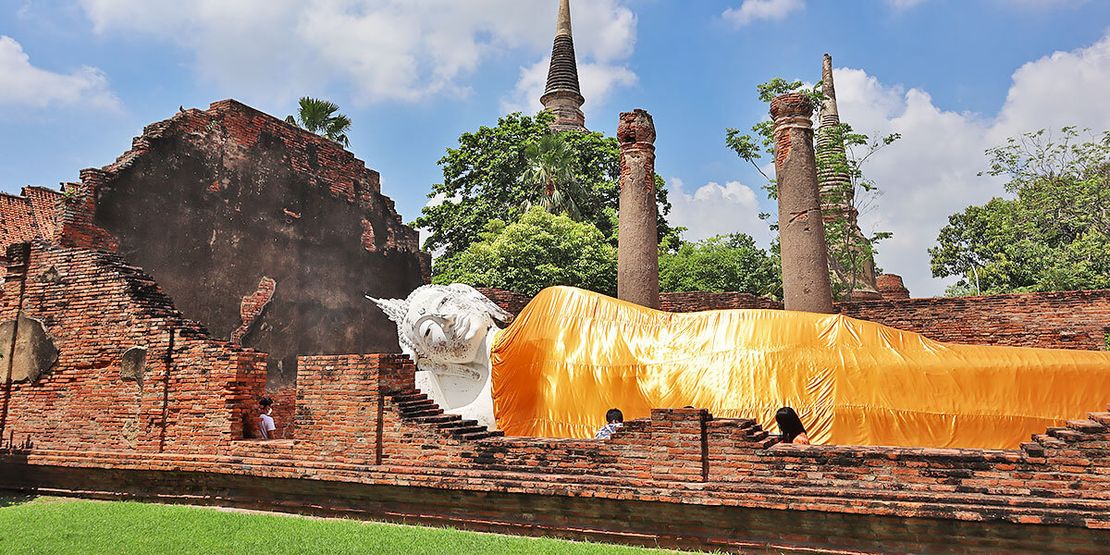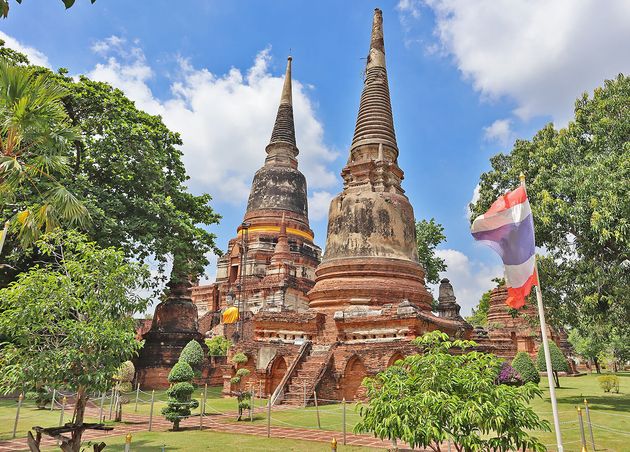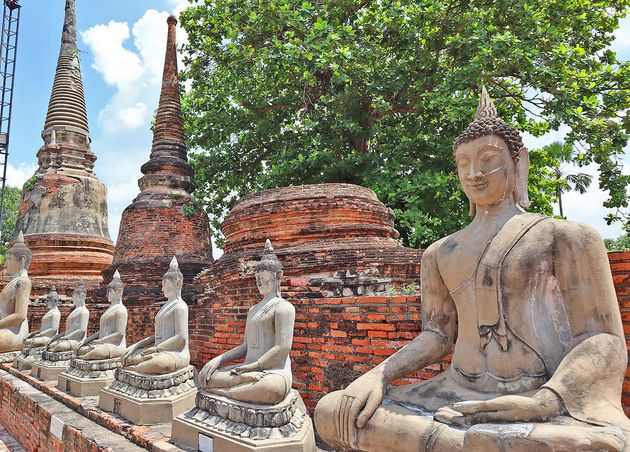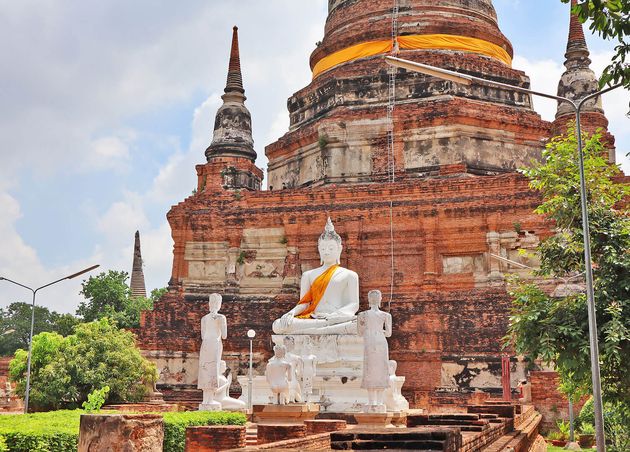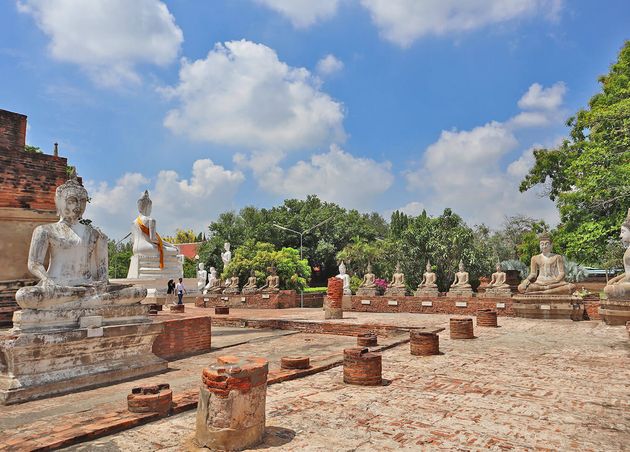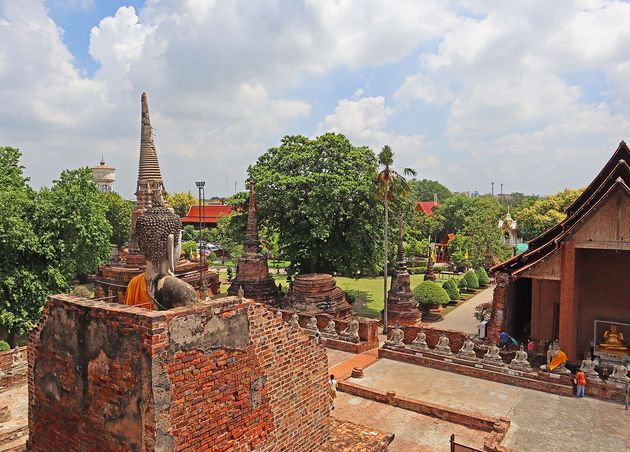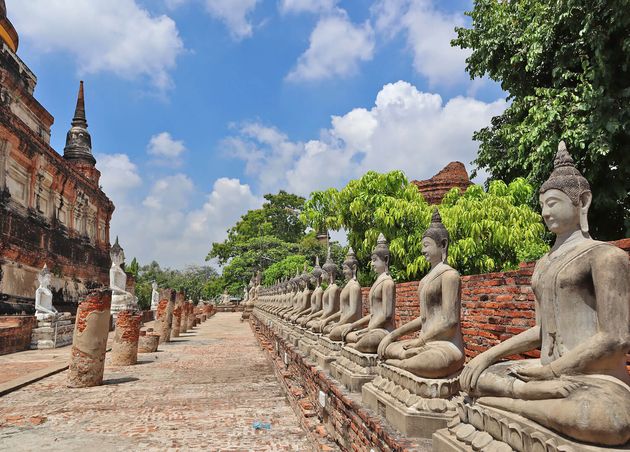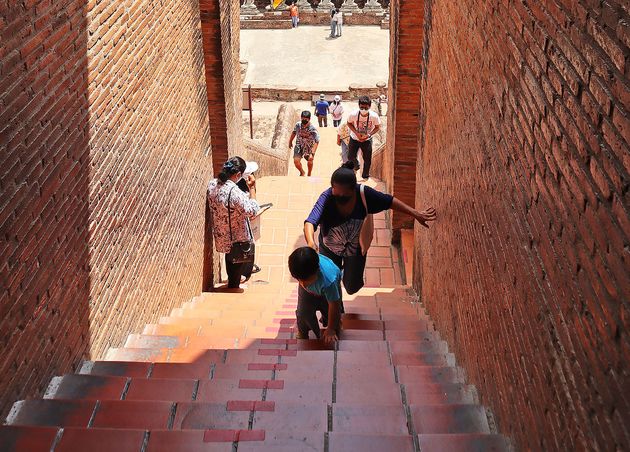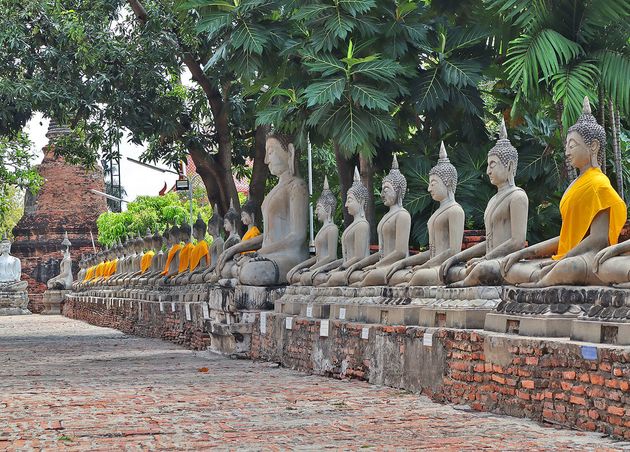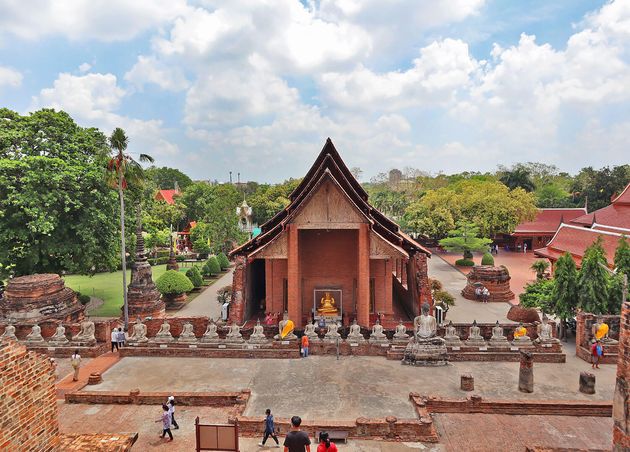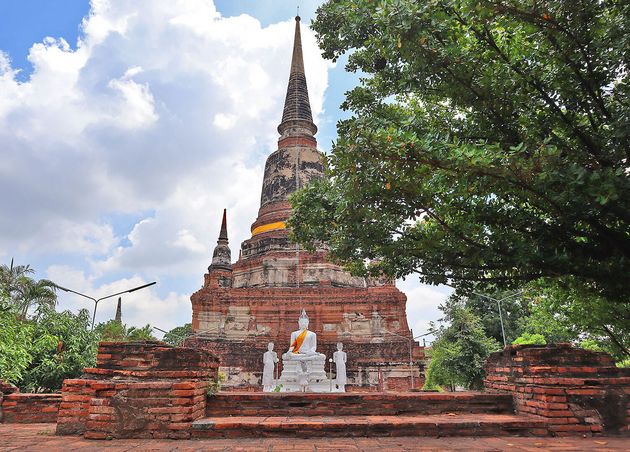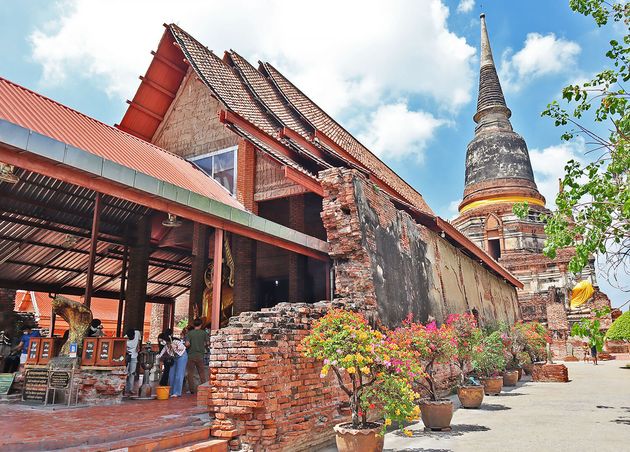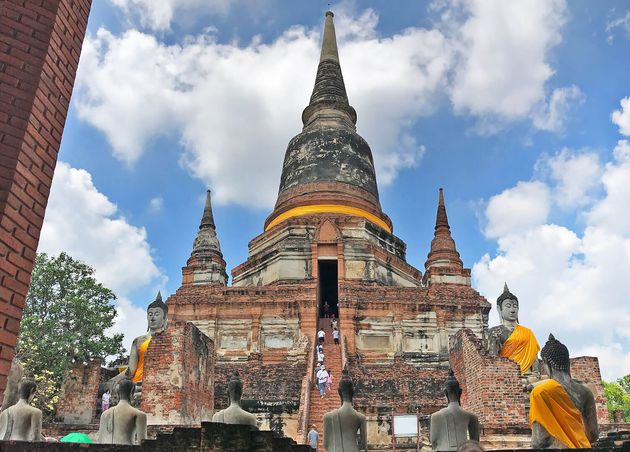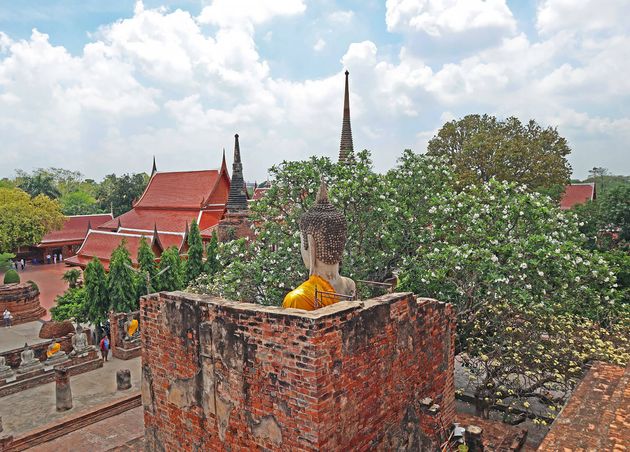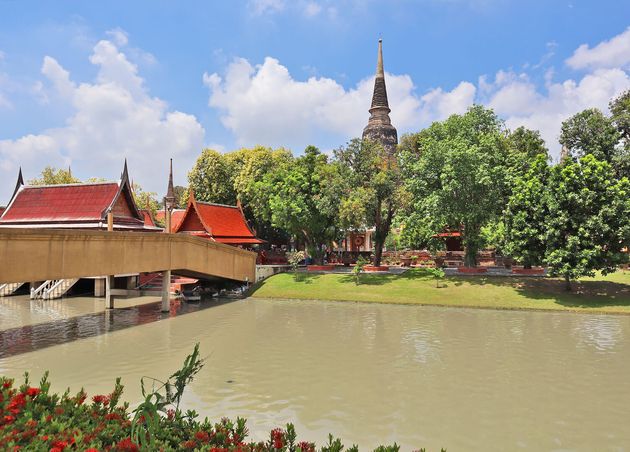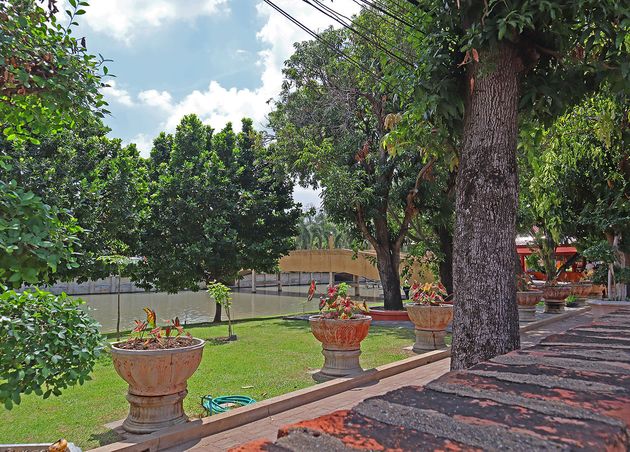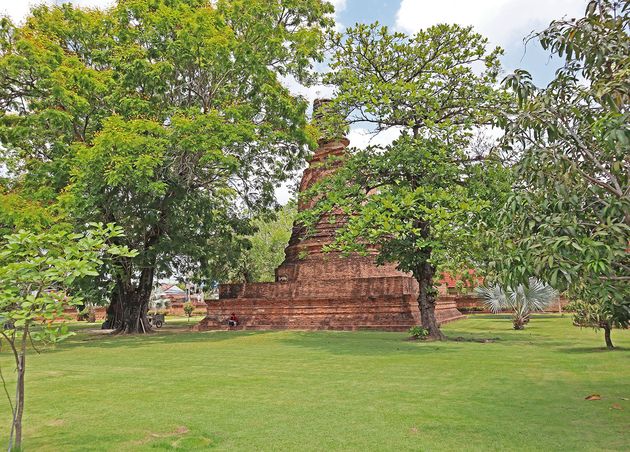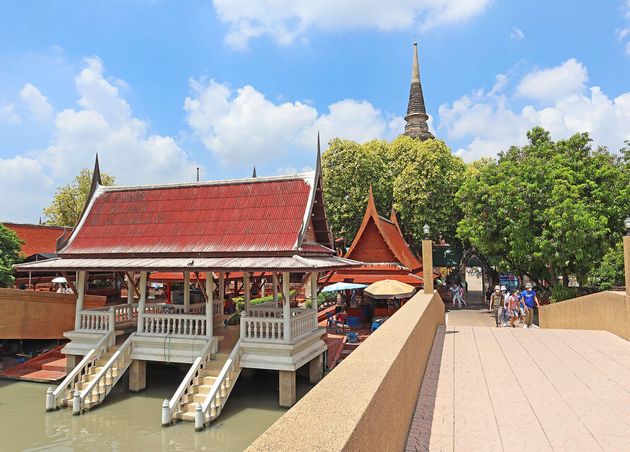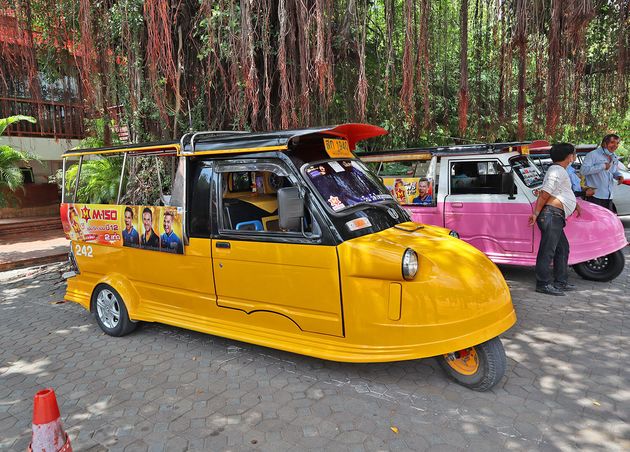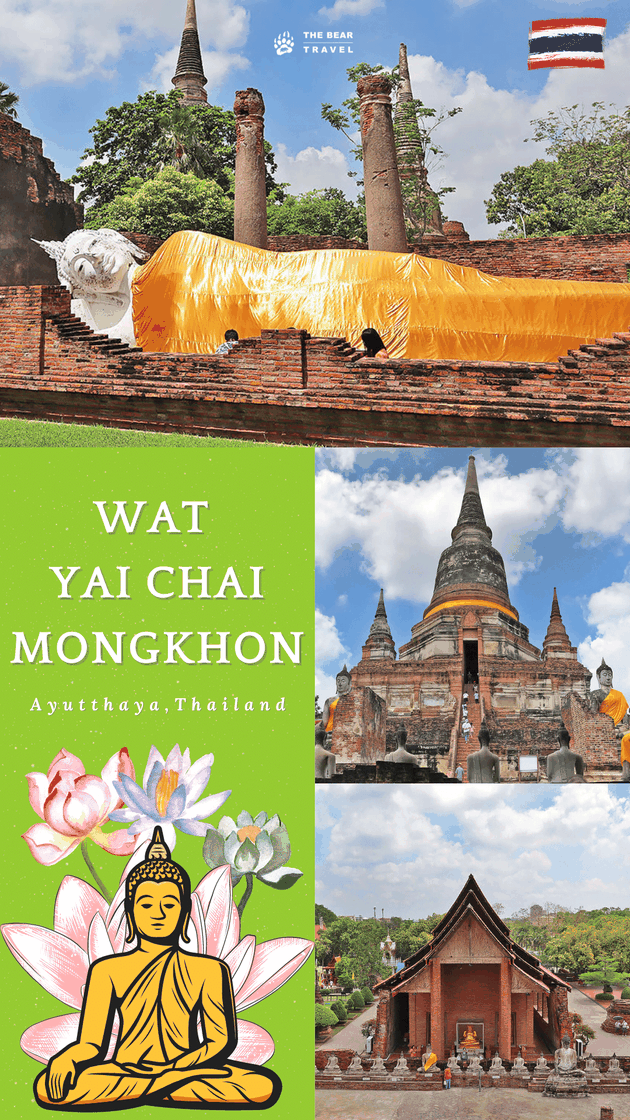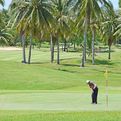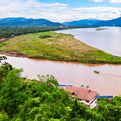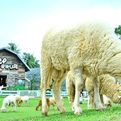Wat Yai Chai Mongkhon: The Monastery of Auspicious Victory in Ayutthaya
Ayutthaya is a peaceful and comfortable city, and its temples are nothing short of a spectacle. One of its most significant temples, Wat Yai Chai Mongkhon, has a long and prominent history, unlike many other historical sites, making it well worth visiting.
Located to the east of the ancient island of Ayutthaya, Wat Yai Chai Mongkhon (วัดใหญ่ชัยมงคล), which means "The Monastery of Auspicious Victory," boasts an enormous pagoda, known as assessing prang, which offers stunning views of the surrounding area. The temple remains an active place of worship, with monks residing in kuti on the grounds. Thai people visit to honor Buddha and pay homage to King Naresuan the Great, one of the most honorable Kings in Thai history.
So prepare to be amazed as we take you on an unforgettable cultural visit to Wat Yai Chai Mongkhon in Ayutthaya.
Wat Yai Chai Mongkhon is famous for its later constructions, including the Chedi or Pagoda, built by King Naresuan The Great. The large Chedi in the monastery was built for distinctive architecture, and later on, it came to be known as "Wat Yai Chiamongkhon."
History of Wat Yai Chai Mongkhon
According to historians, the original location of Wat Yai Chai Mongkhon may have been a significant Khmer temple complex before the construction of Ayutthaya. Numerous temples were later built here, which bear many different names. 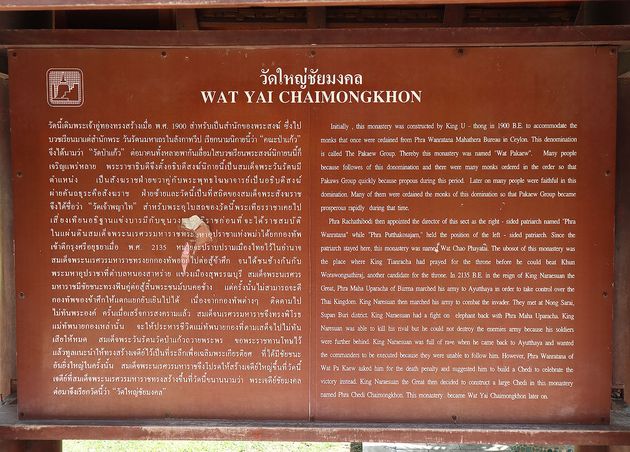
King U-Thong declared Ayutthaya as the capital of Siam in 1350 and designated the site as the royal temple, which came to be known as Wat Chao Phraya Thai. After King Naresuan withstood a Burmese invasion in 1593, improvement work was achieved at the temple, and historians conclude it was at this time that the main chedi was widened.
Subsequently, the temple became known as Wat Yai Chai Mongkhon, which may be defined as the 'Great Monastery of Auspicious Victory.' When Ayutthaya ultimately fell to the Burmese in 1767, the temple was ravaged and evacuated after that.
The site had no monastery until the 1950s, when it was re-established. Subsequently, there have been significant improvement works, and most of the stone Buddha images visible today are of relatively recent origin.
Highlights of Wat Yai Chai Mongkhon
The Architecture of Wat Yai Chai Mongkhon
The temple's primary structures, the head chedi, the main vihara, and the ubosot, are lined up on an East-West axis. Enclosing them stands several assistant chedis in several styles and states of repair and the monks' living quarters, the Kuti. In the Northeast corner is the remains of a viharn enshrining a huge reclining Buddha image.
Buddha Images Lining the Gallery
The central area of the temple is situated on an elevated platform, featuring a massive central prang (chedi) and two mondops. Small prangs are located at each of the platform's four corners.
A staircase on the East side leads up to the entrance of the 60-meter tall bell-shaped chedi, which visitors can climb up to reach the core. Inside a small chamber are various Buddha images adorned with gold leaf offerings made by devotees.
Visitors can also glimpse an excavated chamber that houses enshrined monuments. Two mondops, square brick buildings, are located on the East side of the chedi, enshrining a large seated Buddha image.
Surrounding Gallery
Surrounding the platform is a gallery connecting in the West to the head vihara. Stripping the gallery walls are hundreds of Buddha images enclosed in yellow cloth seated on pedestals in restraining Mara mudra. The gallery’s wooden roof is long gone.
Main Vihara
West of the central prang attached to the galleries stands the main vihara, the assembly hall, of which only its basis remains.
At the back of the hall, a Buddha image on a pedestal faces the West and is accompanied by Sariputta and Moggallana, the Buddha's closest disciples.
The Ordination Hall
The ubosot, or ordination hall, is situated to the temple's east and is still used by monks and devotees, as Wat Yai Chai Mongkhon remains a vibrant religious site.
Although the old roof is no longer extant, the hall's base and parts of its original walls still stand. The original walls have been preserved, and new walls have been built inside them to support a newly designed roof. The hall houses a Buddha image on a pedestal, and the sacred area of the ordination hall is marked by Sema stones surrounding the ubosot.
Reclining Buddha
The Viharn Phra Phuttha Saiyat, also known as the Viharn of the Reclining Buddha image, is located in the Northeast corner of the grounds. King Naresuan oversaw the construction of the hall during his reign. The large image, facing East towards the rising sun, is adorned with a yellow cloth, and its feet are covered with gold leaf applied by devotees. The Buddha image underwent restoration in 1965.
Main Chedi
The primary bell-shaped chedi at Wat Yai Chai Mongkhon is a distinctive landmark of Ayutthaya. Tourists can ascend the steps that lead to a platform offering sweeping vistas of the temple complex. The chedi is surrounded by a rectangular gallery adorned with numerous stone Buddha images. Though the original statues were likely gilded, the current ones are adorned with saffron-colored straps. While these statues may not be the originals, visitors should still treat them with reverence.
King Naresuan Monument
There are thousands of statues of roosters and fighting cocks in the vicinity of the King Naresuan monument. King Naresuan was said to have possessed fighting cocks famed for their strength and courage. The statues in King Naresuan’s honor represent the king’s fighting spirit and bravery.
Other Structures
Adjacent to the platform leading to the Reclining Buddha vihara stands a sizable and well-preserved chedi. Around the complex are many assistant chedis and the Kuti, the monks' private living quarters.
Wat Yai Chai Mongkhon is open daily from 8 am to 5 pm. Entry for non-Thais is 20 Thai Baht (free for Thai people). In addition to being a critical historical site, this is still an enthusiastic temple, and tourists are expected to dress well and act respectfully.
Why Visit the Wat Yai Chai Mongkhon in Ayutthaya?
Regarding tourism, Wat Yai Chai Mongkhon is supposedly a temple with stunning architecture, including a large chedi in the ancient Ayutthaya style that still exists in its majesty.
Wat Yai Chai Mongkhon is a place for those who would like to come to pay respect to monks, make merit, and take photos in a chill way with elegant ancient sites from the past; this place is deemed the most adequate for all. The temple's highlight is a large chedi that is believed to have been restored in the reign of King Naresuan the Great.
Inside the temple, promising incantations have been discovered, and Phra Phuttha Chai Mongkol is enshrined Inside the ubosot. The principal Buddha image is the spiritual object of the temple. In addition, within the temple is also the shrine of King Naresuan the Great.
Visiting there in the morning is advised as the weather is very nice. You can walk and see the ancient monuments without the temple being too crowded. Taking pictures from any angle is wonderful. You can spend a day for the relaxation of mind and take beautiful pictures to go back with.
How to Visit the Wat Yai Chai Mongkhon in Ayutthaya?
You can get to Wat Yai Chai Mongkhon by renting a bicycle from one of the many rental shops in Ayutthaya city center, your hotel, or your guesthouse. You can hire a tuk-tuk, ideally for a whole city tour, for around 200 Thai Baht per hour.
If traveling by bicycle, try to have a map of the boats crossing the arms of the river (around 10 THB per passenger with a bike); it will save you detours and retaining to take the main road. Of course, you can also rent a motorbike.
The present name of the monastery was bestowed after the construction of the Chedi Chai Mongkhon in the late 16th century.
Map & More Information
Wat Yai Chai Mongkhon (วัดใหญ่ชัยมงคล) is the ancient temple in Ayutthaya, which was initially built in the 14th century by the creator of the Ayutthaya Dynasty to celebrate the great victory and remember the great strength of the Thai people. Famous for its large number of Buddha statues and the Great Pagoda, the temple is an enchanting place to touch the glorious ancient Thai culture.
|
Fees |
Thai Citizens: FREE | Foreigners: 20 Thai Baht |
|
Business Address |
40 Khlong Suan Phlu, Phra Nakhon Si Ayutthaya District, Phra Nakhon Si Ayutthaya 13000 |
|
Business Hours |
8:00 AM - 5:00 PM | Monday - Sunday |
|
Contact Number |
+66 (0) 35 242 640 |
|
Facebook Page |
|
|
|
|
|
GPS |
14.3455168, 100.5902621 |
The Bear Team
We, The Bear Team, are a united group of digital experts and adventurers. Combining technical skills with creative flair, we deliver informative, valuable, up-to-date content. Whether seeking travel inspiration or innovative solutions, we're your go-to for fun, authentic, impactful, and timeless experiences.
The Bear Travel | Experience like a Local
A fast-growing Thailand Travel Blog written by Expats and Thais since 2017. We will share our experiences and ideas from an insider point of view for you to create your own unique Thailand experience.
For the latest news and events about The Bear Travel, follow us on Facebook, Instagram, Twitter, Pinterest, or YouTube.
For any issues, concerns, or queries, don’t hesitate to CONTACT us.
Recommended for you
Freelance Essentials: Key Security Practices to Protect Your Work
Faheem Hussain (Nomad Bear)
Pizzeria Da Luigi: An Authentic Italian Restaurant in Bangkok
Tle (Hungry Bear)
Top 10 Most Popular Pattaya Restaurants Listed on Tripadvisor
Tle (Hungry Bear)


